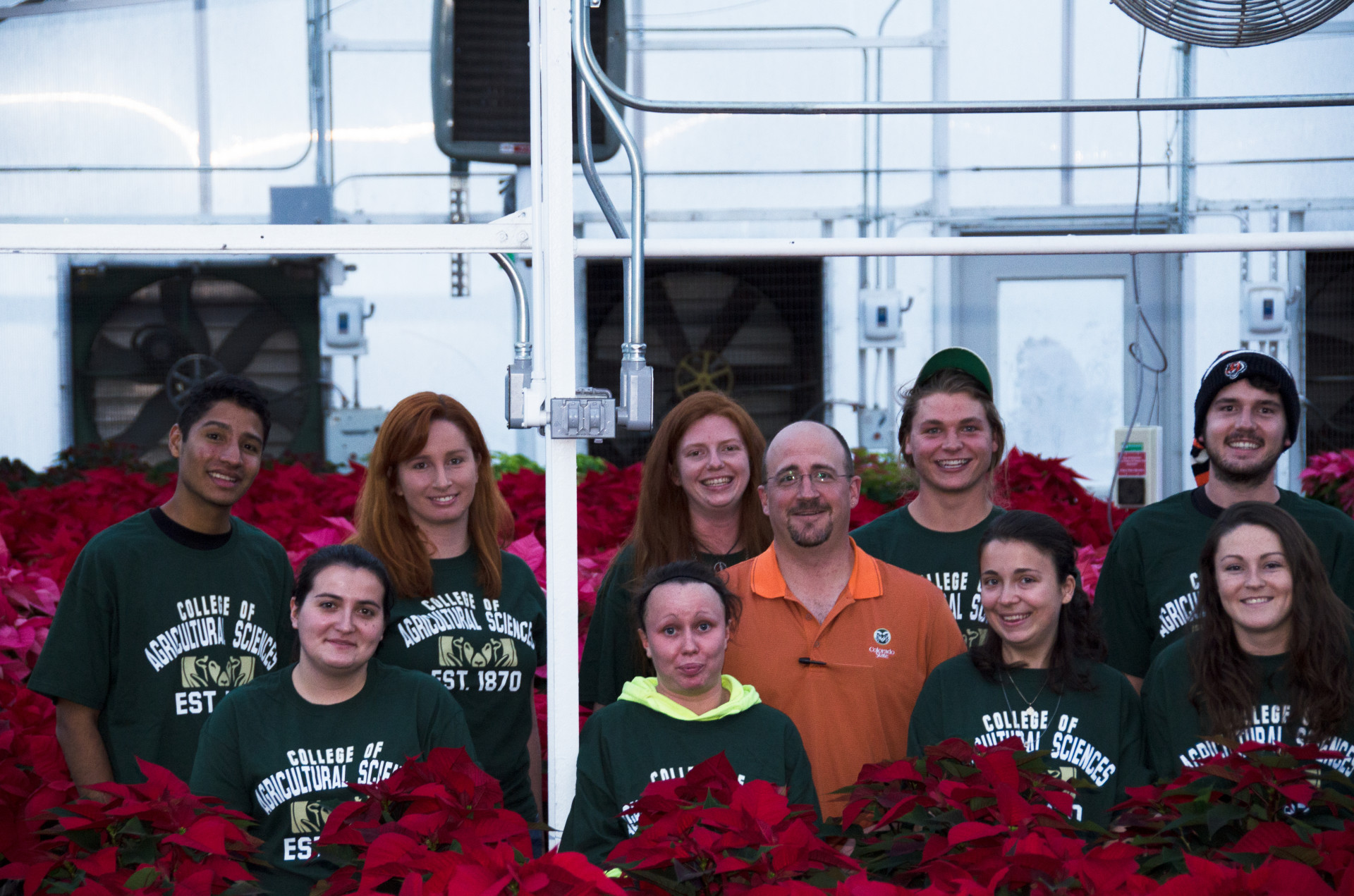
Seasonal celebration
For four months, students in CSU’s s fall floriculture practicum have nursed hundreds of poinsettias from tiny rooted cuttings into vivid holiday plants. The practicum is a course offered through the Department of Horticulture and Landscape Architecture within CSU’s College of Agricultural Sciences.
And after a semester of watchful greenhouse gardening, the horticulture students see their poinsettias as more than simple potted plants. The students view their poinsettias as the living embodiment of seasonal celebration.
1,800 plants, more than 15 poinsettia varieties
Students began sharing the results of their work during Colorado State University’s 19th poinsettia sale last week at the W.D. Holley Plant Environmental Research Center greenhouse on campus. The sale has been extended to run through this week or until all of the plants are sold
1,800 individual plants representing more than 15 poinsettia varieties
The poinsettia crop, raised by senior floriculture student manager, Mike Hazlet, and ten students in this semester’s floriculture practicum, encompasses nearly 1,800 individual plants representing more than 15 poinsettia varieties. Five of the students are on an exchange program from Brazil. The plants, with their color-saturated bracts, come in scarlet, pink and cream; some novelty varieties boast bracts that are speckled, variegated and marbled.
Valuable experience
“This is my first year organizing the students of practicum in the poinsettia fundraiser for PERC, and it has been a wonderful experience watching and helping these students apply what they have learned in their undergraduate careers in a practical setting,” said Hazlet. “They did a great job and stuck with it through to the end, and they received some valuable experience in the process, learning what it is like at an ornamental grow operation.”
The students who nurtured the enticing display admit they’re devoted to the plants.
Not only has it been wonderful to grow these poinsettias and watch the grow every day, but it also feels good knowing that these poinsettias will end up making someone’s day a little brighter,” said Kari-Lisa Boyer, one of the practicum students.
Hands-on horticulture skills
For years, the department has used its fall floriculture practicum to give students hands-on greenhouse and horticulture skills, said Steve Newman, floriculture professor and greenhouse crops Extension specialist. The class traditionally has focused on poinsettias and has culminated in a public plant sale.
During the semester, practicum students monitor the poinsettias for pests and disease. They fertilize, water, maintain the greenhouse – and, crucially, meet the need for complete darkness at night.
Poinsettias, as short-day plants, must have a full 12 hours of darkness as they mature in order to gain their characteristic saturated colors. That’s a big challenge in a greenhouse surrounded by street, residential and security lights. So every evening, horticulture students draw curtains of black plastic over greenhouse panels to protect their poinsettias from light pollution.
Sale details
- Colorado State University’s 19th annual poinsettia sale is open to the public and will continue Dec. 8-12 (or until the plants are sold) from 9 a.m. to 5 p.m. daily.
- Location: W. D. Holley Plant Environmental Research Center greenhouse, 630 W. Lake St.
- Plants come in 6-inch pots and cost $10 each. There are a few 8-inch pots for $12 each.
Poinsettia facts
- For care and handling information, refer to a CSU Extension fact sheet about poinsettias. It’s available online at the website.
- The poinsettia is the most popular holiday plant sold in America; the plant is the focus of a $9-million wholesale industry in Colorado.
- Poinsettias are native to Mexico and Central America.
- The plants were part of Aztec rituals and, after the arrival of Franciscan missionaries, were incorporated into Christian traditions.
- In 1825, Joel Roberts Poinsett, the first U.S. minister to Mexico, introduced the plant to the United States and gave Euphorbia pulcherrima its common name.